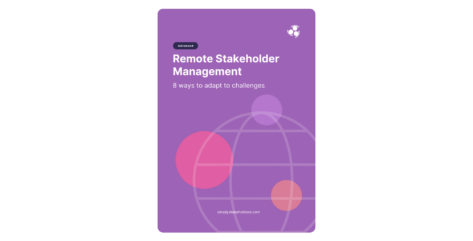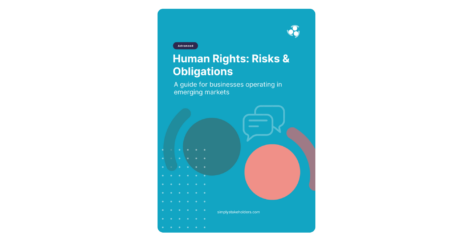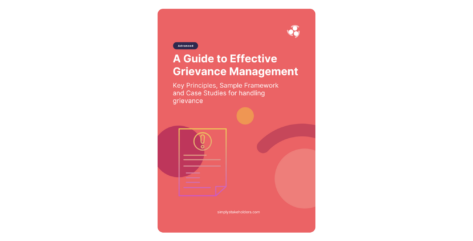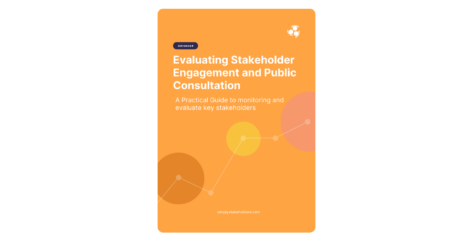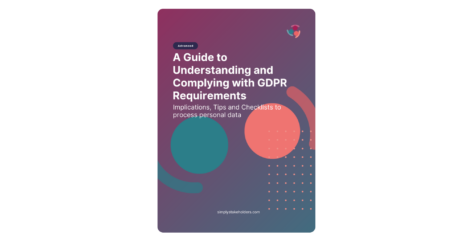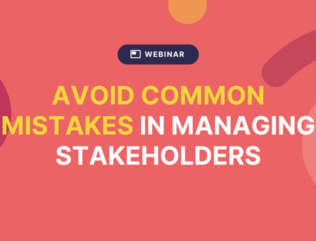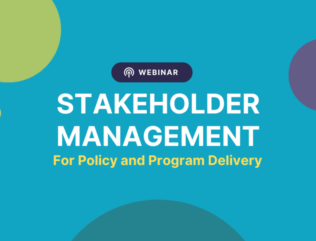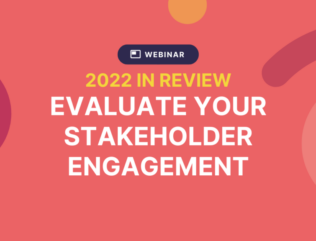Principles of Good Stakeholder Engagement

Looking for a cheat sheet to help you undertake a successful stakeholder engagement?
Unfortunately… there isn’t one! That’s because every project, stakeholder list, impacts, and (therefore) consultation process is different.
But the good news is, a number of experts have worked to develop stakeholder engagement principles. These are general best practices that can guide you through each phase of your consultation to be more efficient and effective in achieving your outcomes.
So, let’s explore some popular schools of thought and examples of stakeholder engagement principles and frameworks being used in organizations today.
What Does Good Stakeholder Engagement Achieve?
Before we go any further, it’s important to define stakeholder engagement and what success might look like — this will provide some context for your engagement principles.
Generally, the stakeholder engagement process involves:
- Identifying stakeholders – Create a list of people who are impacted by, have an influence on, or an interest in the work or organization
- Understanding stakeholders – Including demographics, characteristics, preferences, degree of impact/influence, concerns, relationships, sentiments, and more
- Communicating with stakeholders – Inform stakeholders about proposed changes that may impact them and how they can get involved
- Getting feedback from stakeholders – Find out what stakeholders think and consider their suggestions
- Providing opportunities for participation – Allow stakeholders to get involved, contribute skills/knowledge, and even influence outcomes and decisions that impact them
Good stakeholder engagement should pave the way for:
- New insights from a greater range of perspectives
- Improved relationships with stakeholders
- Better informed decisions that take into account stakeholder needs and impacts (environmental, economic, and social)
- Greater trust (and goodwill) between the organization and its stakeholders
- Earlier identification of potential risks and roadblocks
- Improved transparency and accountability
4 Schools of Thought on Stakeholder Principles

So, how do you increase your chances of getting stakeholder engagement right? There are several popular approaches, each worth considering.
1. International Finance Corporation (IFC) Stakeholder Consultation Principles
IFC published a stakeholder consultation guide with 11 principles of good practice. They argue that a consultation should be:
- Targeted – Reach those stakeholders most likely to be impacted by the project
- Early – Start consultation as soon as possible so that you can scope out the major issues and allow stakeholders to influence the decisions that impact them
- Informed – Ensure stakeholders get relevant information in advance
- Meaningful – Present content in an easy-to-understand format and use culturally appropriate techniques
- Two-way – Make sure both sides can share their views and information, are listened to, and have their issues addressed
- Inclusive – Be aware that men and women often have different perspectives and needs
- Localized – Your engagement activities should reflect local languages, context, and timeframes
- Unbiased – Steer clear of manipulation and coercion throughout the engagement process
- Documented – Keep track of who you’ve engaged with and the key issues raised (it’s easier to do this if you have a tool like Simply Stakeholders!)
- Reported – Provide timely reports to stakeholders, sharing outcomes and next steps for the engagement
- Ongoing – Continue to engage throughout the life of the project or organization
2. International Association for Public Participation (IAP2) Core Values
Another popular approach is IAP2’s core values for public participation. They are based on the following ideas:
- Those who are impacted by a decision have a right to participate in the decision-making process
- The public’s contribution should influence the decision
- Participation should lead to more sustainable decisions by taking into consideration the needs of all parties, including the decision-makers
- It’s important to seek and support the involvement of your stakeholders (those who are potentially impacted by or interested in a decision)
- Designing how your stakeholders participate is an important part of seeking input from them
- It’s important to provide stakeholders with the information they need for meaningful participation
- Participants should be informed on how their input impacted the decision
3. Association of Project Management (APM) Principles
APM has published 10 key principles of stakeholder engagement to help project managers improve their response rate and (therefore) increase the likelihood of successful project delivery. These principles include:
- Understand stakeholders first – Communicating with stakeholders is important, but you should first gather information on your stakeholders
- Consult early and often – Early and regular consultation (especially if the project is likely to evolve) will help you negotiate and reach an agreement with most of your stakeholders
- Stay people-focused – Remember that all your stakeholders are humans first, and come with feelings and personal agendas that may impact their behavior
- Plan ahead – Take the time to carefully plan your engagement upfront
- Build relationships – Make an effort to develop stakeholder relationships, as this will increase trust and confidence, while speeding up problem-solving and decision-making processes
- Anticipate hazards and risks – Try to stay a step ahead by anticipating problems and taking simple, timely actions that will keep your project on track and minimize risk
- Find a compromise – Establish a weighted hierarchy based on relative importance to determine the outcome, where stakeholders have differing expectations and priorities
- Define success – Talk to your stakeholders to understand what a successful project delivery looks like to them
- Accept responsibility – Get clear on who is responsible for what throughout the engagement
4. Organization-Specific
Many larger organizations also develop their own stakeholder engagement principles and policies. For example:
- Meta – The principles that guide Meta’s stakeholder engagement
- Queensland Health – Stakeholder engagement framework
- BP – How we engage with our stakeholders
- Goldfields – Stakeholder engagement
- ICMM – Our principles: Stakeholder engagement
Depending on your organization’s resources and requirements, it might be worth drafting your own list of stakeholder engagement principles. The main benefit of this is that you can tailor your principles based on your values, industry, and stakeholders — and embed them in your culture.
Download Our Free eBook
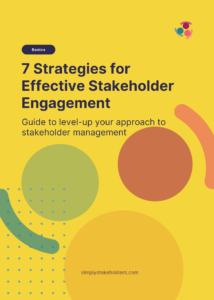
If you’d like to take a deeper dive into stakeholder engagement principles, definitions, and best practices, download our eBook, 7 Strategies for Effective Stakeholder Engagement.
We’ve included tips that will help level-up your approach to managing stakeholders, whether you’re a beginner or experienced professional.
Learn More
Want to learn more about stakeholder engagement basics, best practices, and more? Check out our related content:
- Stakeholder Engagement Best Practices [Article]
- 7 Signs You’re Getting Your Community Engagement Right (Or Wrong) [Article]
- Evaluating stakeholder engagement and public consultation [eBook]
- The Importance of Stakeholders [Article]
- What Does Stakeholder Mean? [Article]
- Accountability in Public Participation [Article]
- Human Rights, Risks & Obligations [Article]






